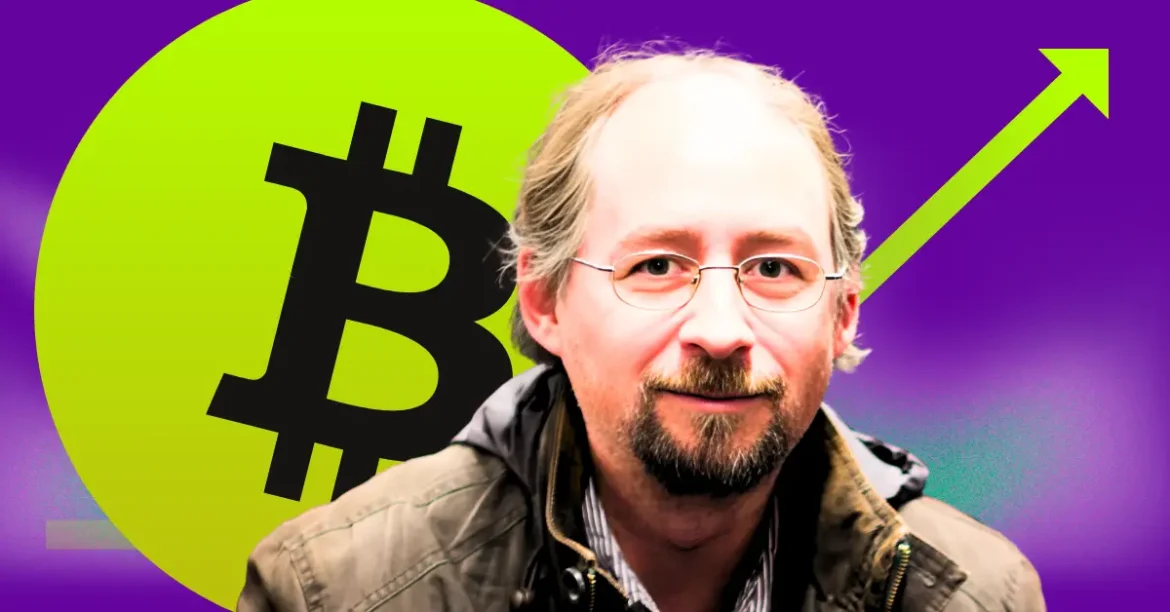The enigmatic influence of Adam Back and Blockstream on Bitcoin’s evolution is a multifaceted narrative that intertwines technological innovation, governance debates, and philosophical ideals. Bitcoin, the world’s first decentralized digital currency, has thrived not only due to its groundbreaking technology but also because of the key figures who have shaped its trajectory. Among these figures, Adam Back, a cryptographer, cypherpunk, and CEO of Blockstream, stands out as a pivotal yet controversial persona. His involvement in Bitcoin’s inception and ongoing developments has drawn both admiration and skepticism. Exploring Back’s role, Blockstream’s agenda, and the broader implications for Bitcoin’s decentralized ethos provides a nuanced understanding of this complex dynamic.
Adam Back: Cryptographic Pioneer and the Unsung Architect of Bitcoin’s Core Mechanism
Adam Back’s foundational impact on Bitcoin traces back to his invention of Hashcash in 1997, a proof-of-work (PoW) algorithm designed to combat email spam by requiring computational work. This concept was subsequently adapted by Satoshi Nakamoto for Bitcoin’s mining mechanism, cementing Back’s indirect yet critical influence on Bitcoin’s design. His expertise earned a direct mention in the Bitcoin white paper, notably because he was among the few to respond to Satoshi’s early communications. Back’s career advanced with the co-founding of Blockstream in 2014, a company concentrating on developing Bitcoin infrastructure and sidechains to expand Bitcoin’s functionality. This role elevated him to a leadership position shaping Bitcoin’s future, lending weight to his views on scalability, security, and network evolution.
Back’s contributions extend beyond technical innovations. His public persona as a guardian of Bitcoin’s integrity has been shaped by his outspoken stance on various contentious issues. For instance, during the Bitcoin fork debates, Back characterized certain contentious upgrades as “coups,” emphasizing the primacy of consensus and gradual improvements over disruptive hard forks. His commentary reveals a commitment to the principle that Bitcoin’s decentralization and long-term stability outweigh short-term market gains or aggressive protocol changes. Back also staunchly defends Bitcoin’s anonymity and the preservation of Satoshi Nakamoto’s mystery, viewing the founder’s anonymity as integral to Bitcoin’s philosophical underpinning.
Blockstream and Its Controversial Role in Bitcoin’s Ecosystem
Blockstream, under Back’s leadership, spearheads innovations like sidechains and the Liquid Network, aiming to enhance Bitcoin’s capabilities by enabling faster transactions and confidential settlements without compromising decentralization. However, Blockstream’s influence provokes debates regarding Bitcoin’s governance and decentralization. Critics argue that Blockstream’s influence consolidates control over Bitcoin’s development, potentially constraining the currency’s open-source ethos. Accusations emerge around “crypto crime cartel” narratives claiming efforts to restrict Bitcoin’s supply, manipulate market dynamics, or enforce protocols favoring institutional interests over grassroots adoption.
One particular flashpoint centers on the “Paper Bitcoin” controversy, where allegations surfaced about fabricated Bitcoin supply impacting market perceptions, and some voices link such phenomena to Blockstream strategies. While some claims remain speculative, they underscore tensions between different Bitcoin community factions over transparency, influence, and control. The broader implications of these controversies highlight the delicate balance between innovation and decentralization. As Bitcoin continues to evolve, the role of entities like Blockstream becomes increasingly significant, raising questions about the concentration of power and the potential for centralized control within a decentralized system.
The Broader Implications of Concentrated Influence in a Decentralized System
Bitcoin was architected as a decentralized network resistant to control by any single entity or coalition. The rise of influential players like Adam Back and Blockstream highlights the ongoing tension between decentralization ideals and practical realities of leadership, funding, and coordinated development. This dynamic invites critical questions about how concentrated influence affects Bitcoin’s community-driven governance. The balance between visionary leadership and community consensus is delicate. Blockstream’s technical contributions help push Bitcoin forward, yet ensuring open discourse and diverse developer participation remains essential to avoid oligarchic dominance.
Another critical question revolves around the risks that arise if market manipulations linked to perceived power centers are true. Alleged tactics like exaggerating Bitcoin supply or controlling protocol narratives could erode trust and fuel divisiveness. Transparency and accountability mechanisms become key defenses against such risks. The final question pertains to whether innovation can coexist with decentralization without compromising either ideal. Developing new layers (e.g., sidechains) or scaling solutions involves trade-offs. A transparent dialogue about these trade-offs ensures stakeholders understand and accept incremental changes rather than resorting to fractious splits.
Conclusion: Navigating Bitcoin’s Future with Caution and Open Eyes
Adam Back’s journey from Hashcash inventor to Blockstream CEO underscores how individuals can profoundly impact decentralized technologies. His role exemplifies the blend of innovation, stewardship, and controversy shaping Bitcoin today. While his efforts have driven technological progress and defended Bitcoin’s core tenets, allegations of market manipulation and centralized control fuel ongoing debates within the community. For Bitcoin enthusiasts, investors, and developers, the path forward requires vigilance and critical engagement. Appreciating the value of influential contributors like Back must be coupled with demands for transparency, inclusivity, and adherence to Bitcoin’s foundational principles. Only through this balanced approach can Bitcoin mature without sacrificing the decentralization and freedom that make it revolutionary. As Bitcoin continues to evolve, the interplay between influential figures, technological advancements, and community governance will remain a critical area of focus, ensuring that the spirit of decentralization endures.





